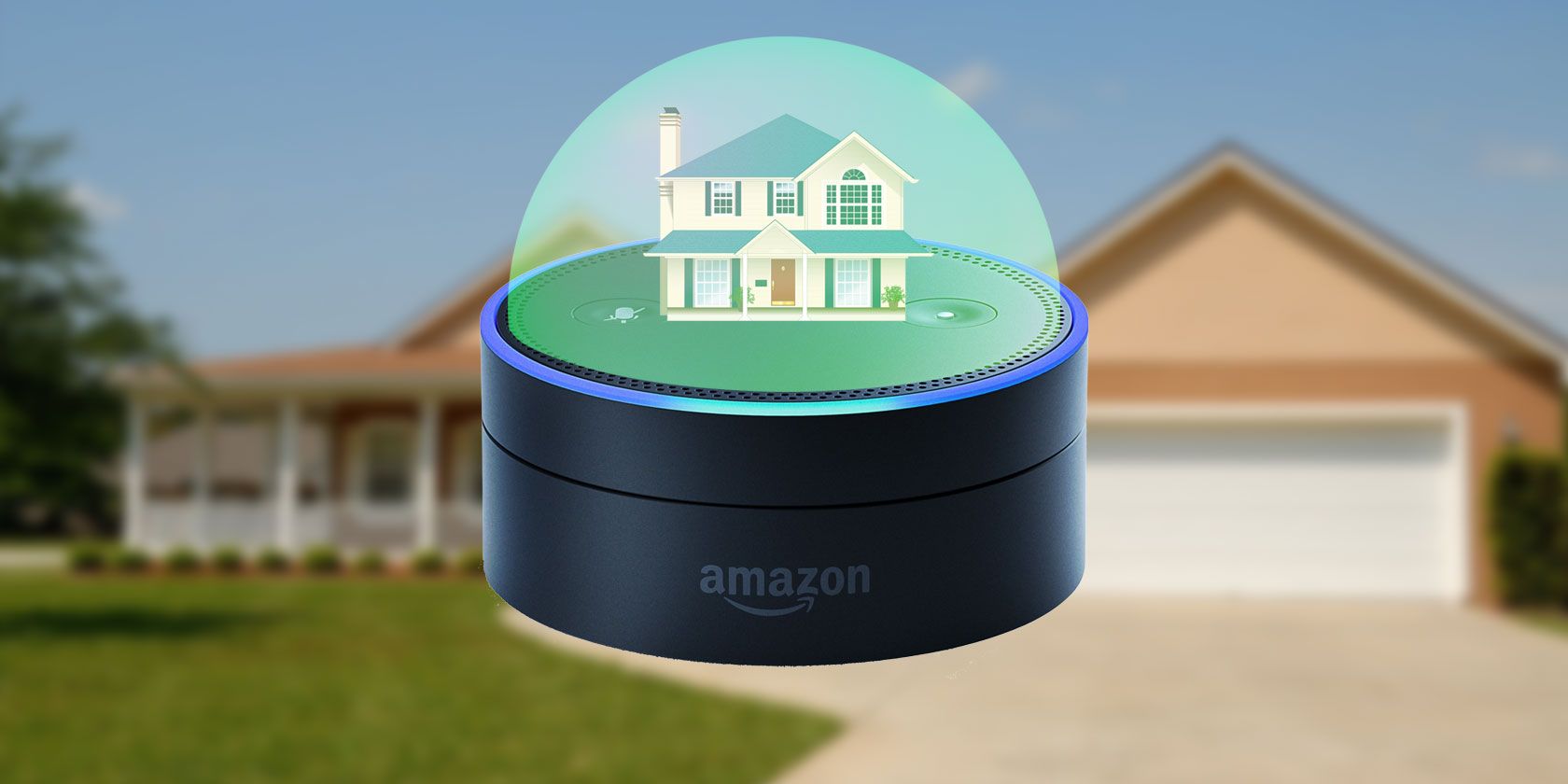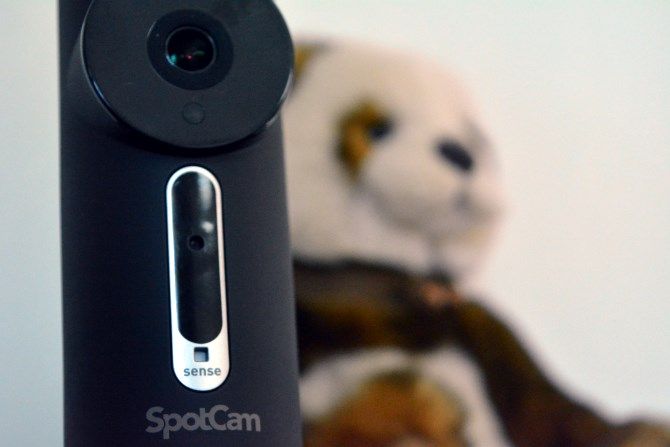You've been using it for playing music, calling your friends, or just checking the weather. But your Amazon Echo is far more powerful than that. Not only can it form the hub of a smart home, your Amazon Echo (Dot, Spot, Show, whatever) can also act as the control point for a number of home security appliances.
All of this means that you can use your Amazon Echo and Alexa as a home security system.
Get Started: Safely Position Your Amazon Echo
Before you begin connecting hardware to your Amazon Echo to communicate directly with Alexa, it's a good idea to make sure that your Echo device is physically secure. You should already have a strong password on your Amazon account, keeping the device secure online.)
Situating an Amazon Echo near a door or window is risky; after all, it could be snatched by a passing thief. You don't want that situation to arise if you're planning to coordinate your home security through the device. The safest option here is to position your Echo out of sight. This may not be easy for devices like the Echo Show, which is why having an Echo Dot is a good idea. It's small enough to sit on a shelf or mantelpiece, after all.
There's also the chance of voices from outdoors being picked up. Intentional mischief may occur; on the other hand, passers-by or neighbors called "Alex" or even "Alexa" could cause unintentional results. After all, voice recognition can't always get the right songs to be played.
A good solution to this is to change the Wake Word. You can do this in the app (or at alexa.amazon.com) via Settings > Wake Word. Instead of Alexa, choose one of the alternatives: Amazon, Echo, or Computer.
Check the Compatibility of Your Security Devices
Before you connect your security appliances---smart locks, smart cameras, smart alarm systems, etc.---to your Amazon account via Alexa, it's worth considering if they're truly compatible, and secure.
Amazing as it may seem, not all security hardware currently on the market is compatible with Amazon Echo devices. In some cases, IFTTT is an option for bridging the gap, but it adds a delay. After all, you're adding an extra service into the mix.
In addition, older smart security products are not as secure as their more recent iterations. We've seen stories in the past of smart cameras being hacked, or even sold without the option to change the default (and publically accessible) password. On a related note, older smart home security hardware doesn't support the latest networking standards. You wouldn't want to connect devices to your network that could prove to be vulnerable to exploitation.
Security hardware you plan to add to your home and control via Alexa should be regularly updated, with robust security.
Configure IFTTT Integration
Before proceeding with hardware integration, it's worth setting up IFTTT with your Amazon account. This is important as any item that cannot be directly controlled via Alexa should be accessible through IFTTT.
To do this, head to ifttt.com/amazon_alexa. You'll be prompted to log into IFTTT first; if you don't already have an account, you can use a Google account or Facebook. Once signed in, agree to enable the connection between your IFTTT and Amazon accounts. A few moments later and you'll have access to all the security device recipes (IFTTT scripts) that you need.
Want more help? Our ultimate IFTTT guide should fill in the gaps.
Now that you're ready to go, which security devices should you connect to Amazon Echo?
Use a Smart Lock
The first option is a smart lock. Fancy locking your front door remotely, or using a keycard (or even your smartphone) to permit access to your property? You'll need a smart lock, an internet-connected device that is accessible via a mobile app, and your Amazon Echo.
August, Schlage, and Kwikset are just a few of the brands offering Alexa-compatible smart locks. Alexa support usually means that you can check if your front door is locked, as well as send a command to lock or unlock. This could prove particularly useful if you're in the backyard and a visitor arrives.
Check our list of smart locks for a device you're confident will meet your needs, and offer Alexa compatibility.
Integrate Smart Alarm Systems
With your house all locked up, you'll naturally want to know when someone's trying (or succeeding) to break in. You need a smart alarm system, such as those available from Scout or Vivint, with Alexa skills integration.
No longer do you need to rely on the mobile app; simply utter the relevant command from the comfort of your bed before you slip off to sleep. Sweet dreams, safe in the knowledge that you house is all locked up, with Alexa at the heart of it.
Use Alexa-Compatible Security Cameras
Many security cameras are available Alexa compatibility. Whether you want to monitor your property's interior or keep an eye on the action outdoors, make sure you can access them from anywhere and place the cameras in safe spots facing safe directions.
This means you can check what's going on via your smartphone; but it also means that you can instruct Alexa to activate cameras, run in a particular mode, set up and down times, determine whether you want notifications of movement, and much more.
Create the Illusion of Being at Home
"Merry Christmas, ya filthy animal."
Kevin McCallister's family in Home Alone didn't have smart technology (hey, it was the 1990s). If they had, they could have quickly seen that the son they left at home was safe. Meanwhile, he wouldn't have had to rely on dummies and train tracks to create the illusion of a party at the otherwise empty home.
Internet-connected lamps and other smart lights can create the impression that someone is staying in your house. Meanwhile, if you hear a "bump in the night," uttering "Alexa, turn on the lights" can immediately set your mind at rest (or scare away an intruder).
Similarly, remotely activating certain appliances can create the illusion of presence. Used in conjunction with smart lights, internet-connected motorized curtains, Smart TVs and other devices can present the appearance that you're home when you are in fact thousands of miles away.
And all of these things can be accessed locally, or remotely, via Alexa! Need help? Check out our favorite smart lights.
Use Brand New Smart Security Hardware
A major risk with smart home hardware is online security. Over the years, problems with smart home devices and their passwords or wireless security protocols have arisen time and time again. Issues with individual devices can be checked online, and the resolutions found.
Older hardware is particularly prone to vulnerabilities. If you're using hardware that hasn't received updates for some time, now is the time to find out why.
Ultimately, with Amazon Echo and Alexa at the heart of everything, you need to ensure that all of your smart home devices are completely secure. Failure to do so could result in vulnerabilities being exploited, and your smart home being invaded. Not very secure!
But it isn't just the security hard that is a problem. Used Amazon Echo devices could be shipped as a wiretap for a third party. Security researchers have proven this is possible, and if it happened to you would prove the worst possible beginning for your Alexa-controlled smart home security system.
Don't rule out Amazon Echo itself as a weak point. If you're concerned about the privacy of your Echo device, our Amazon Echo privacy tips will help.
Make Your Amazon Echo the Hub of Your Secure Home
Getting everything set up and connected will take a bit of time, even with systems that can run without IFTTT. Either way, your Amazon Echo can be central to your smart home security system, whether you run a separate smart home hub or not.
You may, of course, require more than one Amazon Echo device for this to work in your home. If so, check our guide to the best Amazon Echo devices for your needs.



